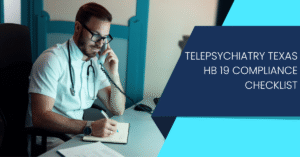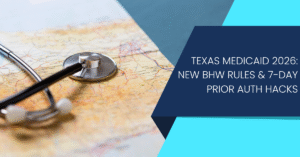In the ever-evolving landscape of healthcare, patient privacy and data security have become paramount concerns. The Health Insurance Portability and Accountability Act (HIPAA) stands as a critical safeguard to protect sensitive patient information. However, Navigating HIPAA Compliance can be a complex and daunting task for healthcare providers and organizations. In this comprehensive guide, we will not only unravel the intricacies of HIPAA but also emphasize the importance of a compassionate approach towards compliance.
Understanding the Essence of HIPAA
HIPAA, enacted in 1996, is more than just a set of regulations. It represents a commitment to preserving patient privacy and data security in an increasingly digital world. At its core, HIPAA consists of two primary rules: the Privacy Rule and the Security Rule.
The Privacy Rule
The Privacy Rule governs the use and disclosure of protected health information (PHI). PHI includes any information that can be used to identify an individual’s health status, healthcare, or payment history. Compliance with the Privacy Rule ensures that patients have control over their personal health information and can trust healthcare providers to keep it confidential.
The Security Rule
Complementary to the Privacy Rule, the Security Rule addresses the technical and administrative safeguards necessary to protect electronic PHI (ePHI). It mandates healthcare organizations to implement measures to safeguard digital patient data, ranging from encryption to access controls.
The Compassionate Approach to HIPAA Compliance
Compassion is often not associated with regulatory compliance, but in healthcare, it’s an essential element. HIPAA compliance doesn’t need to be a barrier to providing quality care; instead, it can be a tool to enhance patient trust and satisfaction.
Educate and Empower Staff
HIPAA compliance begins with education. It’s vital to ensure that every member of the healthcare team understands the importance of protecting patient information. A well-informed staff is more likely to embrace compliance measures.
Prioritize Patient Communication
Transparency is key to a compassionate approach. Patients should be informed about how their information is used and have the opportunity to consent or opt out where possible. Building trust through open communication can strengthen patient-provider relationships.
Implement Access Controls
Access controls aren’t just a regulatory requirement; they’re a way to protect patient privacy. Limiting access to patient records to only those who need it helps prevent unauthorized disclosures and breaches.
Regularly Audit and Update Policies
HIPAA regulations evolve, as do healthcare practices. Regularly auditing and updating policies and procedures ensures that your organization stays in compliance with the latest requirements.
Respond to Incidents with Compassion
Data breaches can happen despite the best precautions. When they do, responding with compassion and professionalism can mitigate the damage to patient trust. Promptly notifying affected individuals and taking corrective actions are essential steps.
Navigating HIPAA Compliance in a Digital Age
In today’s digitally connected world, healthcare providers rely heavily on electronic health records (EHRs) and telehealth solutions. While these technologies offer numerous benefits, they also pose unique challenges for HIPAA compliance.
Securing EHRs
Electronic health records have transformed healthcare, enabling quick access to patient information. However, securing EHRs is crucial. This involves encryption, regular software updates, and robust access controls.
Ensuring Telehealth Compliance
Telehealth has surged in popularity, especially in response to the COVID-19 pandemic. Providers must ensure that telehealth platforms and communications adhere to HIPAA standards to protect patient privacy during remote consultations.
Cloud Storage and HIPAA
Many healthcare organizations now use cloud storage for data. When utilizing cloud services, it’s essential to choose HIPAA-compliant providers and maintain control over ePHI access.
Also read:
HIPAA Compliance in a Changing Regulatory Landscape
HIPAA compliance doesn’t exist in isolation. Healthcare organizations must also navigate an evolving regulatory landscape with laws like the Health Information Technology for Economic and Clinical Health (HITECH) Act and the Omnibus Rule.
The HITECH Act
The HITECH Act extended the scope of HIPAA by imposing stricter penalties for non-compliance and encouraging the adoption of electronic health records. Compliance with HITECH is critical to avoid significant fines.
The Omnibus Rule
The Omnibus Rule clarified certain aspects of HIPAA, such as the responsibilities of business associates. Healthcare organizations need to ensure that their third-party vendors also comply with HIPAA regulations.
Conclusion: The Path to Compassionate HIPAA Compliance
In conclusion, HIPAA compliance is not just a legal obligation but also a commitment to patient well-being. Navigating the complexities of HIPAA can be a daunting task, but by embracing a compassionate approach, healthcare providers and organizations can enhance patient trust and ensure the security of sensitive information.
By educating staff, prioritizing patient communication, implementing access controls, and staying up-to-date with evolving regulations, healthcare organizations can not only meet HIPAA requirements but also create a safe and caring environment for their patients.
Remember, compliance isn’t just about checking boxes; it’s about fostering a culture of respect for patient privacy and data security. With compassion as your compass, you can navigate the world of HIPAA compliance successfully and ethically, ultimately benefiting both your organization and the patients you serve.









